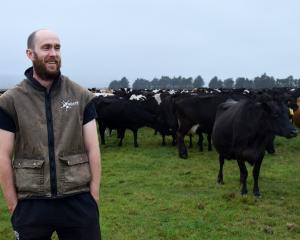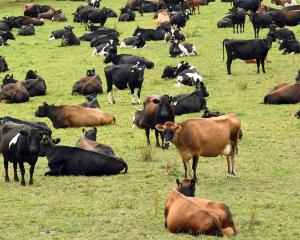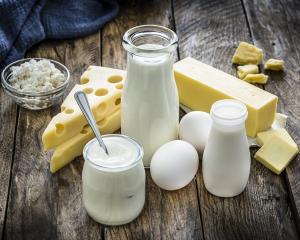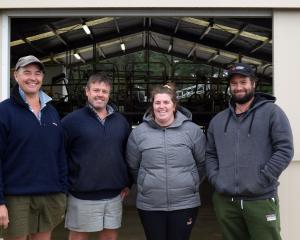
However, Rabobank is highlighting possible headwinds from rising fertiliser costs, a lower New Zealand dollar, rising interest rates and northern hemisphere competition.
Rabobank dairy analyst Emma Higgins described the new season ahead as having a "shaky start" but a strong finish was anticipated.

Rabobank forecast a 2018-19 farmgate milk price of $6.40 per kilogram of milk solids.
The new season should be profitable for most New Zealand dairy farmers, despite greater uncertainty in the global operating environment.
"One of the global risks looming in the near term is the peak period of milk production in the northern hemisphere," she said.
The northern hemisphere "flush" would be an "influential pressure point" for commodity prices at the start of the 2018-19 season and Ms Higgins anticipated supply would outstrip global demand in the coming months.
"However, as the second half of the 2018-19 season develops, Rabobank anticipates commodity prices will improve as production growth from key exporting regions decreases and a robust import programme by Chinese buyers supports commodity prices across this period," she said in a recent seasonal update.
Assuming normal weather conditions, Ms Higgins forecast modest milk production growth of about 2% this season. While milk production was expected to "reboot" after consecutive years of flat growth, a combination of environmental regulation, changes in palm kernel extract use, political uncertainty and increasing social pressures on farming practices would take the edge off exceptional milk growth in the new season.
"This forecast reflects the new era for New Zealand dairy, featuring greater utilisation of pasture and lower stocking rates," Ms Higgins said.
One factor which might affect dairy farmer margins was the upward pressure on interest rates.
The interest-driving official cash rate is expected to remain steady in the coming year and most economists are not expecting an upward shift from the present 1.75% until at least halfway through next year.
However, Ms Higgins said there was likely to be some upward pressure on commercial lending rates during 2018, and dairy farmers should plan accordingly.
Herd feed and fertiliser were also on Ms Higgins’ watch list for farmers.
While local feed is plentiful heading into winter, Fonterra’s new limits on palm kernel extract would be a factor behind modest production growth. She said other feeds would be needed to fill the gap, particularly in the shoulder parts of the season or if adverse weather devastated pastures as it had done in places in 2017-18.
"For the most part, farmers have prepared and adjusted their feed systems to meet the new requirements and will enter the new season in a position to cope with the changes," she said.
However, for those less prepared, it might take time to switch to alternate feeds and adjust to the new requirements, meaning higher feed costs, she said.
Ms Higgins said there was an ample supply of fertiliser, keeping global benchmark prices low, favouring New Zealand farmers and supporting profit margins in the lead-up to spring.
"There is risk of some inflationary retail pressure," she said.
She anticipated rising ocean freight costs could combine with the weakening New Zealand dollar over the next year, resulting in upward pressure on fertiliser prices.











